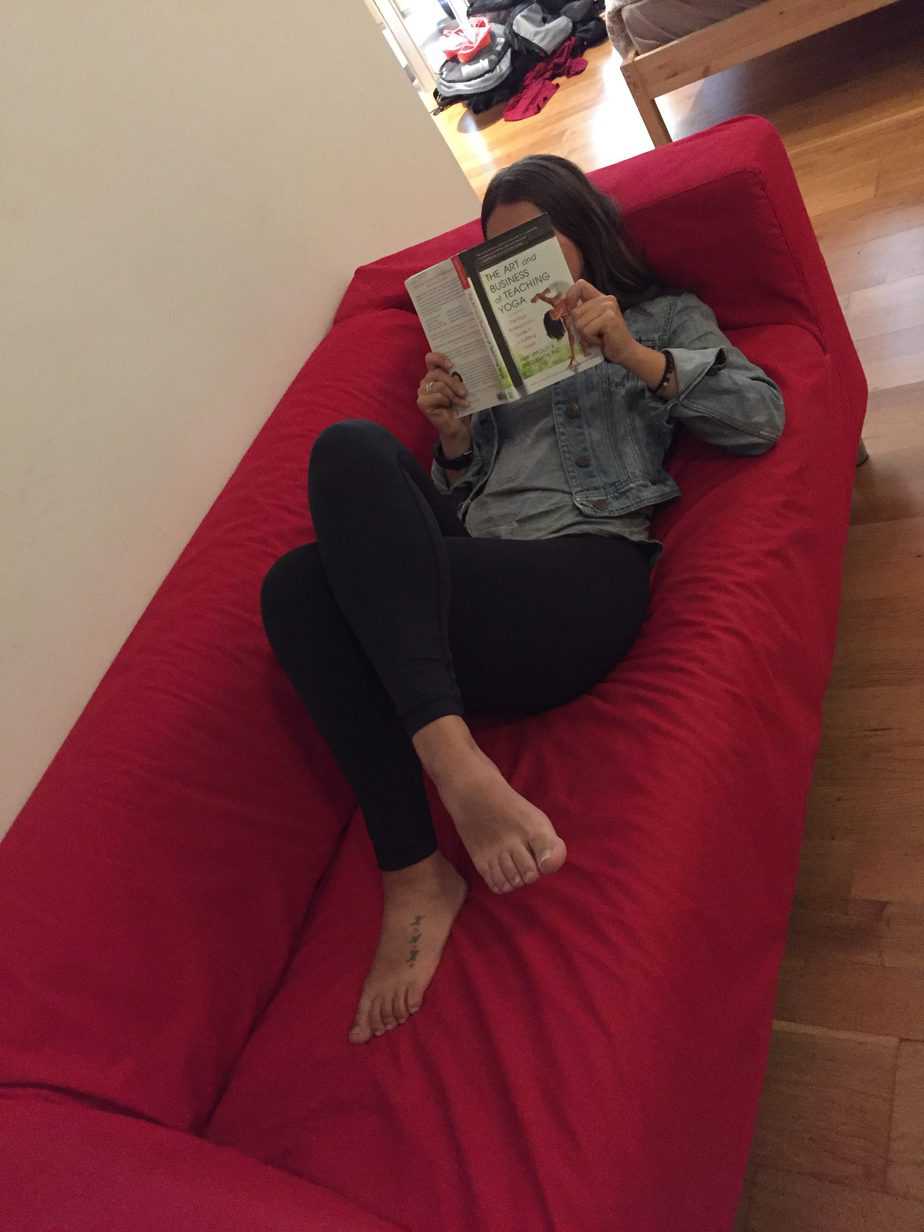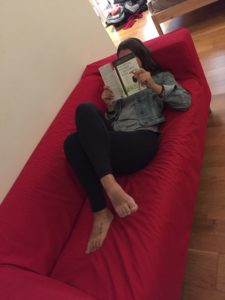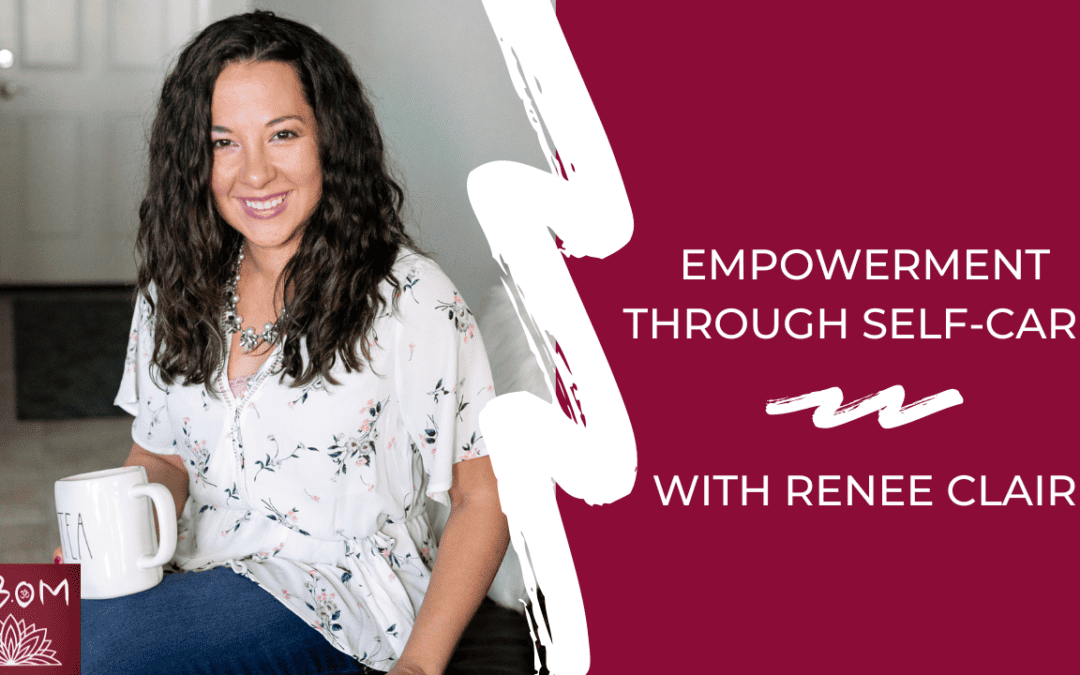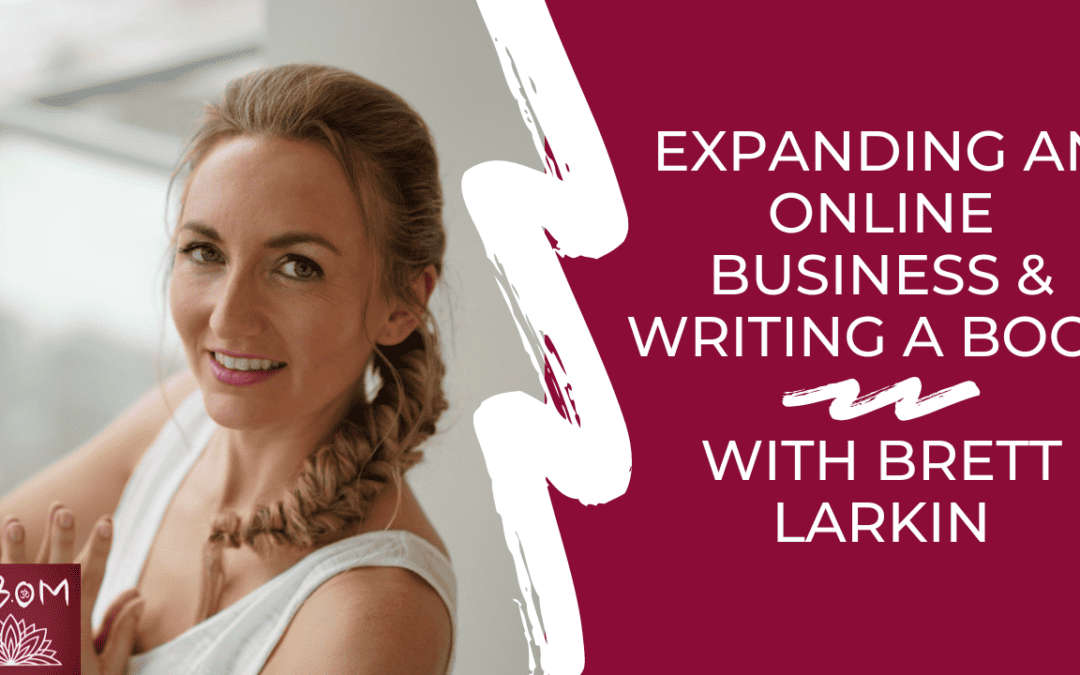I had the pleasure of doing a weekend long workshop with Amy Ippoliti at my hometown yoga studio in Canmore, AB in 2015. I was captivated by her spunky teaching style, and her knowledge of both yoga asana and the physical body. I watched her help people get into poses they had never been able to do, and I witnessed people feel poses in their body in a whole new way. It was inspiring, and as I watched her work her yoga teacher magic, I thought to myself, “I want to study with this woman someday”.
I have yet to study with Amy, but reading her book, “The Art and Business of Teaching Yoga” felt like a step in the direction of gleaming a bit more of her yoga wisdom.
When I heard that Amy had co-written (with Taro Smith) a book on yoga AND business, I was elated. Everything she talks about in her book is the exact reason why I started M.B.Om. Since I began my journey as a yoga teacher, I’ve felt as though there is a massive disconnect between teaching and the business of teaching.
What I loved about this book is that it’s like a condensed textbook on everything you need to know about business, specific to the yoga industry. She encourages that you skip ahead if a particular topic doesn’t apply to you, and has exercises to encourage you to get the creative juices flowing. It’s small, compact, and easy to understand. It’s not like some of the textbooks I attempted to decipher while in business school where I needed a glossary of terms to get through the simplest of concepts.
In chapter 1, Amy touches on the challenges of being a yoga teacher. The one that stands out the most for me is money and the concept of teaching for free. She writes, “Every time a teacher offers a yoga class for free they are paying to teach that class. They bought the gas for their car to get there, they paid for parking outside the studio, and potentially they rented the space too. In other words, they spent more money than they earned. Whenever a class is given away, that choice influences the market, thereby undermining others who depend on their teaching income to support themselves.” She goes on to advise that teaching for free for a benefit or charity can be worthwhile, but not to get in the practice of teaching for free on a regular basis.
I’ve talked to numerous people on the podcast about the concept of teaching for free, and each teacher has his or her own unique opinion. As a new yoga teacher, I have taught quite a few classes for free, and I feel that my time is not valued by the students as much as those that pay to come to my classes. I also feel like I do not have as much incentive to show up as a teacher. Money should not be the primary incentive for teaching, but if you are going to make a career out of being a yoga teacher, there needs to be some reward for the effort put in.
Another great point that Amy touches on is to “remember your own ongoing education”. As facilitators and educators, it is easy to consistently give to our students. We give our knowledge of yogic philosophy, of yoga asana, and of the human body, yet our own education is equally as important in order to succeed as a good yoga teacher.
Within my first year of completing my yoga teacher training, I did 2 additional weekend long teaching programs. As I have become a more experienced teacher, I have found that it is easier for me to get teaching jobs, and my incentive to learn is not as strong. That doesn’t mean it isn’t there, but reading this chapter of “The Art and Business of Teaching Yoga” reaffirmed my commitment to my own education as a teacher.
Chapter 4 digs into the meat of creating a yoga business, discussing writing a business plan, creating a yoga teacher resume, getting good teaching opportunities, creating your teaching schedule, and teaching in a sustainable way.
Sustainable teaching is something that I chat with my guests about on a weekly basis. It is very rare that I talk with someone who has been teaching for 15 years, and who has been sustaining teaching 15-20 classes per week. That’s because it isn’t sustainable over the long run. A few things that are touched on in this section of the book are “exposure and fulfillment”, “location” of the studio, “payment models” where you will be teaching, and who your “student base” is. These are all important elements to consider when you step into the world of teaching yoga full-time. Everything is fine and dandy when you are making $50 for a 60-minute class, but when you factor in your class prep, your commute, arriving early at the studio to set up, and staying after to talk with students and close things down, it can be more like a 3-hour (at least) endeavor. When you divide $50 by 3 hours or more, you are barely making minimum wage for just one class. This is something that is huge to consider before you make the jump to teaching full-time.
“Yoga teachers tend to internalize the idea that it’s wrong to combine yoga and business. They frequently ask me things like, “Amy, if I put myself on Instagram practicing yoga poses, or create a brand and a website, doesn’t that go against yoga’s values?” Yet if your goal is to be a professional yoga teacher and educator then it would behoove you to treat your teachings as you would any other professional endeavor that is financially compensated!”
In my opinion, this is one of the most valuable sections of the book. Yoga is an ancient spiritual practice that we, as yoga teachers, are learning and sharing with our communities. Yet we live in the 21st century where rent, food, cell phone bills and car payments are very real things. I think this is the hardest business concept for a lot of yoga teachers to wrap their heads around, and I don’t believe there is a firm right or wrong – only what’s right for you and what you want out of your teaching.
Moving on in the chapter, Amy touches on brand and how brand can often be a touch concept for yoga teachers to understand because it sounds very marketing. Very corporate. Very unspiritual. And very un-yogic. Once again, it’s a reality of having a career as a yoga teacher.
The thing is, brand doesn’t have to be scary and un-yogic. Basically, it is looking at who you are and what you offer as a yoga teacher, and creating a business around that. Then, you seek teaching opportunities that match what you offer and what you value as a teacher. Branding actually makes the teaching experience a lot more pleasant, in my opinion!
One of my favorite parts about this book is that it goes through each element of building a business around being a yoga teacher. Each element is skimmed over quickly however, so if you are looking for a guide to starting your own yoga studio, or becoming a private yoga teacher, this is probably not your book. This is a great place to start as you build your business, and a great reference to come back as you delve deeper into your teaching.
I would recommend this book for teachers of any experience level, as there is always room to improve your business. Amy and Taro littered this book with highly and easy to apply gems based on their experience as teachers. Thanks for an insightful and inspiring read, guys!






This is such a great review. I got this book recently and can’t wait to dive in. Thanks for your feedback and thoroughness with it all! <3
Thanks! I would love to hear your thoughts on it once you’ve finished 🙂
Awesome!, thanks for the tips!